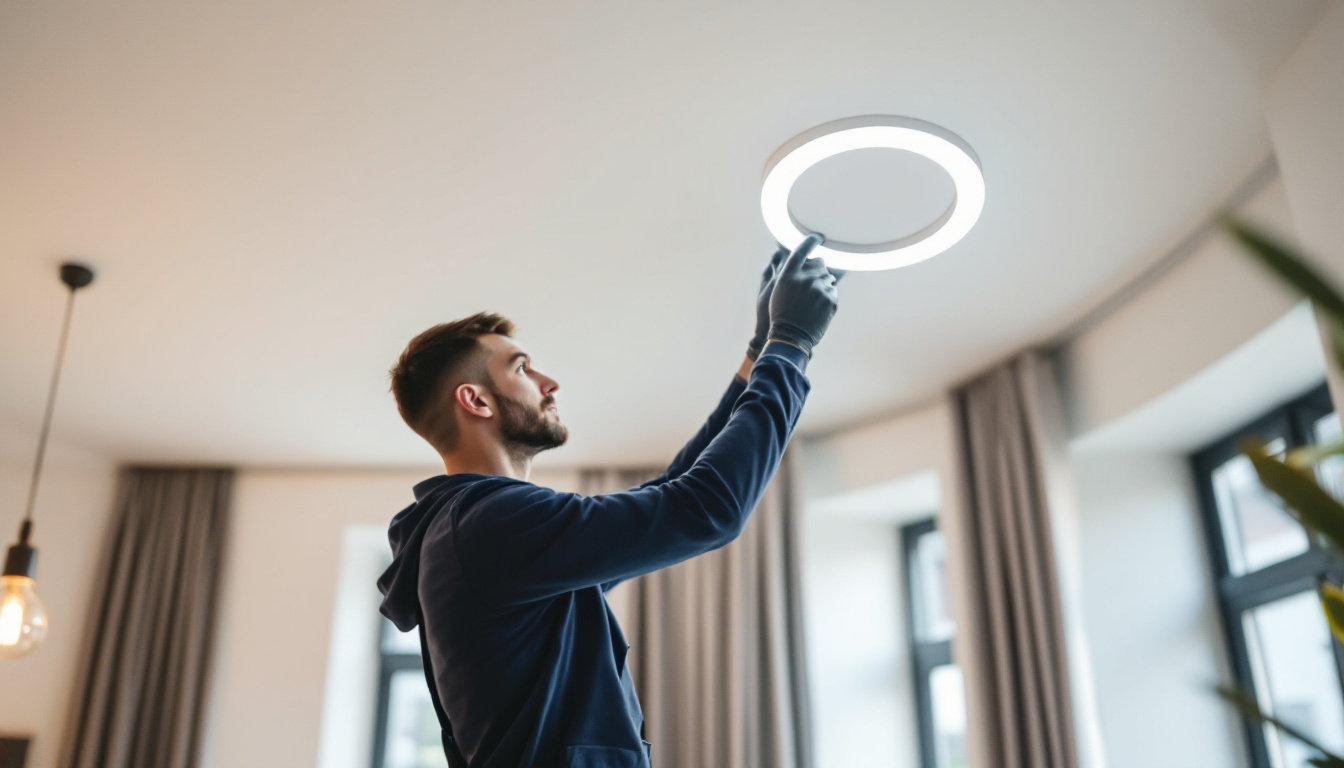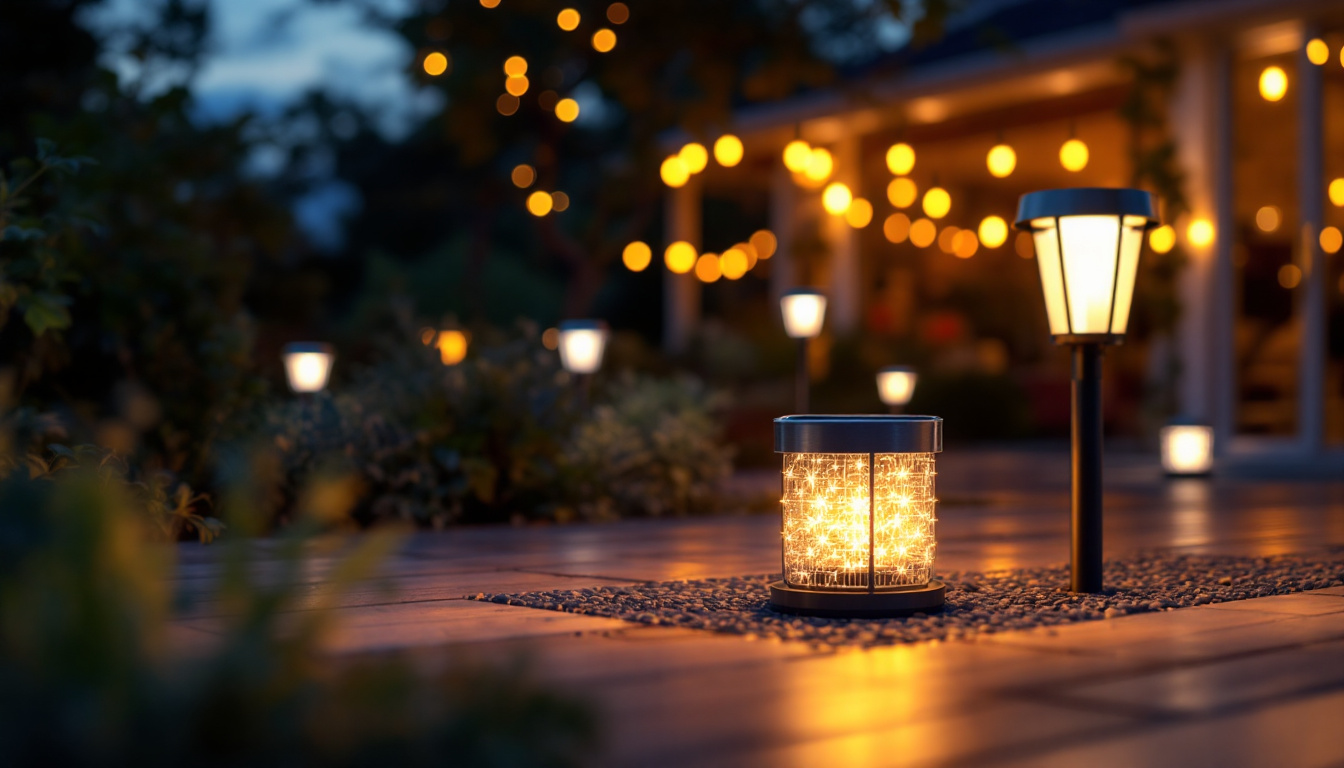

As the demand for sustainable and energy-efficient outdoor lighting solutions continues to rise, solar flood lights have emerged as a popular choice among homeowners and businesses alike. For lighting contractors, understanding the nuances of solar flood lights is essential to provide clients with the best options. This article offers quick tips and insights to help lighting professionals navigate the world of solar flood lighting.
Solar flood lights are a type of outdoor lighting that harnesses solar energy to illuminate spaces. They typically consist of a solar panel, a battery, an LED light source, and a control system. The solar panel absorbs sunlight during the day, converting it into energy stored in the battery. When night falls, the stored energy powers the LED lights, providing illumination without relying on the electrical grid. This self-sustaining energy model not only benefits the environment by reducing reliance on fossil fuels but also empowers users to take control of their energy consumption.
Moreover, advancements in solar technology have led to the development of more efficient solar panels and batteries, allowing for better performance even in less-than-ideal sunlight conditions. This means that solar flood lights can be effectively utilized in various geographical locations, making them a viable option for diverse climates and weather patterns.
One of the most significant advantages of solar flood lights is their energy efficiency. Since they operate on solar power, they can significantly reduce electricity costs for homeowners and businesses. Additionally, solar flood lights are easy to install and require minimal maintenance, making them an attractive option for contractors looking to offer clients a hassle-free lighting solution. The absence of wiring and the need for an external power source simplifies the installation process, allowing for quicker project completion and reduced labor costs.
Another benefit is their versatility. Solar flood lights can be used in various applications, from illuminating pathways and driveways to enhancing security around properties. They come in various designs and brightness levels, allowing contractors to cater to different client needs and preferences. Furthermore, many solar flood lights are equipped with motion sensors, which not only enhance security by providing illumination when movement is detected but also contribute to energy conservation by ensuring lights are only activated when necessary. This feature is particularly appealing for businesses that want to deter trespassers while minimizing energy waste.
When selecting solar flood lights for clients, several key features should be taken into account. The brightness of the lights, measured in lumens, is crucial for determining the effectiveness of the illumination. A higher lumen count typically indicates brighter light, which is essential for security purposes. Additionally, the color temperature of the LED lights can also influence the ambiance of the space; warmer tones may create a welcoming atmosphere, while cooler tones can enhance visibility and alertness.
Additionally, consider the battery capacity and the duration of illumination. A solar flood light that can operate for several hours after sunset is ideal, especially for properties that require extended lighting. Some advanced models even feature programmable settings that allow users to customize the duration and intensity of light based on their specific needs. Lastly, the quality of the solar panel and the materials used in the construction of the lights can significantly impact their longevity and performance. Opting for weather-resistant materials ensures that the lights can withstand harsh environmental conditions, thereby extending their lifespan and maintaining their efficiency over time.
Proper installation is vital for the effectiveness of solar flood lights. Contractors should be familiar with best practices to ensure optimal performance and client satisfaction. Here are some essential installation tips to consider.
The placement of solar flood lights is crucial for maximizing their efficiency. Ideally, the solar panel should be positioned in a location that receives direct sunlight for the majority of the day. This ensures that the battery charges fully, providing ample power for nighttime illumination. Avoid placing the lights under trees or other obstructions that may cast shadows and reduce sunlight exposure.
Furthermore, consider the intended use of the lights when determining placement. For security lighting, positioning the flood lights at strategic points around the perimeter of a property can enhance visibility and deter potential intruders. For decorative purposes, lights can be placed to highlight landscaping features or architectural elements.
Adjusting the angle and height of solar flood lights can significantly impact their performance. The solar panel should be tilted to capture the maximum amount of sunlight, typically facing south in northern hemispheres. For the lights themselves, a height of 7 to 10 feet is generally recommended to provide adequate illumination while minimizing glare.
Contractors should also consider the beam angle of the lights. A wider beam angle can illuminate a larger area, while a narrower beam is more focused. Understanding the specific needs of each project will guide the decision on the appropriate beam angle and positioning.
While solar flood lights are low-maintenance, periodic checks and maintenance can enhance their lifespan and performance. Contractors should educate clients on simple maintenance tasks to ensure long-term satisfaction with their solar lighting systems.
Dust, dirt, and debris can accumulate on solar panels, reducing their efficiency. Regular cleaning is essential to maintain optimal performance. Contractors should advise clients to clean the solar panels periodically, especially after heavy rain or dust storms. A simple wipe with a damp cloth can help maintain the panel’s ability to absorb sunlight effectively.
Additionally, the light fixtures themselves should be checked for any signs of wear or damage. Replacing bulbs or fixtures as needed will keep the lighting system functioning correctly and looking appealing.
Occasionally, solar flood lights may experience issues that can be resolved with a few troubleshooting steps. If the lights are not turning on, the first step is to check if the solar panel is receiving adequate sunlight. If the panel is clean and positioned correctly, the battery may need to be replaced if it is no longer holding a charge.
Another common issue is the lights turning off too early in the evening. This may indicate that the battery is not fully charged or that the solar panel is not receiving enough sunlight. In such cases, contractors can help clients assess the situation and make necessary adjustments to improve performance.
With numerous solar flood light options available on the market, selecting the right products for clients can be challenging. Here are some factors to consider when making product recommendations.
Investing in high-quality solar flood lights is essential for ensuring longevity and performance. Look for products made from durable materials that can withstand various weather conditions. Waterproof and rust-resistant features are particularly important for outdoor applications, as they contribute to the overall lifespan of the lights.
Additionally, consider the warranty offered by manufacturers. A longer warranty period can indicate confidence in the product’s quality and performance, providing peace of mind for both contractors and clients.
Energy efficiency ratings can provide valuable insights into the performance of solar flood lights. Look for products that have been tested and certified for energy efficiency, as these will typically offer better performance and lower environmental impact. This is particularly important for clients who prioritize sustainability in their lighting choices.
Moreover, energy-efficient products can lead to lower energy costs over time, making them an attractive option for budget-conscious clients.
The solar flood lighting industry is continually evolving, with new technologies and trends emerging to enhance performance and user experience. Staying informed about these trends can help lighting contractors provide cutting-edge solutions to their clients.
One of the most significant trends in outdoor lighting is the integration of smart technology. Smart solar flood lights can be controlled remotely via smartphone apps, allowing users to adjust brightness levels, set timers, and even monitor energy consumption. This added convenience appeals to tech-savvy clients and enhances the overall user experience.
Moreover, smart lighting systems can be integrated with motion sensors, further enhancing security and energy efficiency. By only activating when motion is detected, these systems can extend battery life and reduce unnecessary energy consumption.
Advancements in solar panel technology are also shaping the future of solar flood lighting. Newer panels are more efficient at converting sunlight into energy, allowing for better performance even in less-than-ideal weather conditions. As these technologies become more widely available, contractors can offer clients more reliable and effective lighting solutions.
Additionally, innovations in battery technology are leading to longer-lasting and faster-charging batteries, further enhancing the performance of solar flood lights.
Solar flood lights represent a versatile and sustainable lighting solution for outdoor spaces. For lighting contractors, understanding the intricacies of these products is crucial for providing clients with effective and efficient lighting options. By considering factors such as optimal placement, product quality, and emerging trends, contractors can ensure client satisfaction and contribute to the growing demand for eco-friendly lighting solutions.
As the landscape of outdoor lighting continues to evolve, staying informed and adapting to new technologies will empower contractors to thrive in this dynamic industry. With the right knowledge and approach, solar flood lights can illuminate not just spaces, but also opportunities for growth and innovation in the lighting sector.
Ready to elevate your lighting projects with the most efficient and sustainable solar flood lights? Look no further than LumenWholesale, where we provide contractors with the highest quality, spec-grade lighting products at unbeatable wholesale prices. Say goodbye to local distributor markups and hello to our extensive selection that meets rigorous industry standards. With free shipping on bulk orders, you can trust that you’re getting premium lighting at the best value — no hidden fees, no compromises. Don’t miss out on the opportunity to blend quality, affordability, and convenience seamlessly. Wholesale Lighting at the Best Value is just a click away. Illuminate your outdoor spaces with LumenWholesale today.

Discover the key qualities that distinguish top lighting contractors when choosing the perfect LED circle light for your space.

Discover innovative strategies from expert lighting contractors on harnessing solar power for outdoor illumination.

Discover the essential insights lighting contractors need to know about vanity lights.

Discover essential tips for lighting contractors to avoid common pitfalls when installing switched outlets.
Get notified when NEW deals are released.
Optimize your budget with wholesale discounts.
Only top-quality, specification-grade lighting products.
No additional costs at checkout - what you see is what you pay.
We understand the unique needs of contractors.